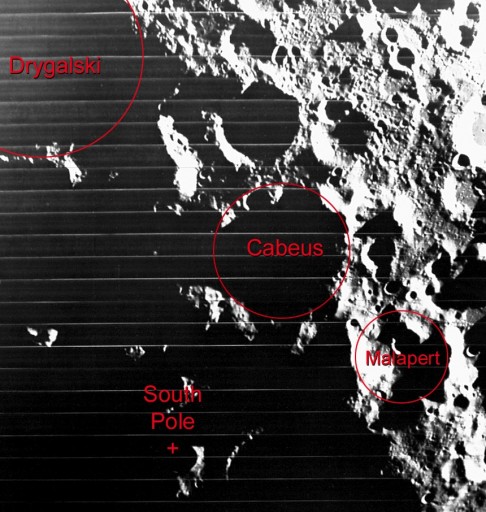October 1, 2009, 4:40 am
The MESSENGER spacecraft got the gravity assist it needed from its third flyby, but the flyby did not go perfectly. Four minutes before its closest approach to the planet, the spacecraft went into safe mode where only functions essential for the spacecraft’s survival are left active. Taking pictures is not one of those functions, which means no images of Mercury were taken when MESSENGER made its closest approach.
Continue reading ‘MESSENGER’s imperfect flyby’ »
September 29, 2009, 11:54 pm
The MESSENGER spacecraft has just made its third flyby of Mercury, passing over just 228 kilometers away from the surface. It takes a lot of energy to directly get from Earth orbit to Mercury orbit, so MESSENGER has been making multiple flybys of Mercury. During each flyby, the planet is used as a gravity assist so that the spacecraft can achieve Mercury orbit with much less fuel. This is the final flyby of Mercury, and MESSENGER will start orbiting Mercury and studying the planet in March, 2011.
Now that MESSENGER has made its third flyby, we just need to wait for the spacecraft to send the data and have it processed for more cool images of Mercury …
September 28, 2009, 11:57 pm
LCROSS was going to crash into crater Cabeus A. But after analyzing data from spacecraft such as the LRO, the Lunar Prospector, Chandrayaan-1, and Kaguya, the impact site for LCROSS has been changed to Cabeus (proper), a bigger crater close to Cabeus A. This determination was made because the hydrogen content and terrain suggests that crashing into Cabeus rather than into its satellite crater would give the best chance of observing water in the resulting plume.

Cabeus and other craters
September 24, 2009, 7:42 am

The Moon
The Clementine and Lunar Prospector spacecraft had detected lots of hydrogen on the Moon, which strongly argued for the existence of water. Traces of water was also found in moon rocks brought back by the Apollo mission. However, the detected hydrogen might have been from sources other than water or could just be unattached protons from the solar wind that somehow managed to stick to the Moon, and the water in the moon rocks might have been from contamination when they were brought back to Earth, so the existence of water on the Moon has continued to be in question.
Continue reading ‘Confirmation of water on the Moon’ »
September 22, 2009, 9:32 am
As part of the International Year of Astronomy, some people came up with the idea of the Galileoscope™, which would be a telescope cheap enough to provide for every child. And at $20 per scope, it really is quite affordable. If you had wanted a telescope but couldn’t afford one, this might be a nice one to have. And even if you don’t want or need one, you could donate $15 per scope for children around the world to help promote science education. In fact, I have just donated funds for a couple myself.
If you happen to be a fan of Dr. Horrible’s Sing-Along Blog, Battlestar Galactica, or Ghost Hunters International, then you also have the chance to donate funds for a bunch of Galileoscopes and get a nice souvenir. Pamela Gay of Astronomy Cast tells us about an auction for two Galileoscopes until October 1st, with the boxes signed by Felicia Day, the casts of Battlestar Galactica, and the casts of Ghost Hunters International. Even if you’re not interested in the auction, you know you want a Galileoscope for yourself and even want to donate some …



